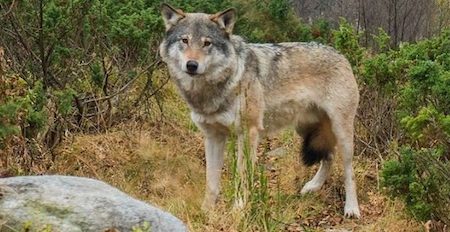
Wolf Howl
Overall Goal
Students will learn about the role of the wolf in the ecosystem, it’s characteristics and adaptations, it’s relationship with the natural world and also with humans. They will have the opportunity to go out into the night and imitate a howl in the hopes of getting a response.
Grade 6 Curriculum Connections
Science and technology - Understanding life systems - Biodiversity
- assess human impacts on biodiversity, and identify ways of preserving biodiversity
- investigate the characteristics of living things, and classify diverse organisms according to specific characteristic
- demonstrate an understanding of biodiversity, its contributions to the stability of natural systems, and it benefits to humans
- Connect to Big Ideas (Fairness & Equity, Systems, Community, Diversity, Interdependence, Ability to Make a Difference, Equilibrium)
Program Description
The program begins with an indoor interactive, multimedia power point presentation which includes, video and audio clips. Spectacular photos highlight the amazing world of wolves, pack dynamics, wolf ecology, their unique adaptations for survival, and common prey species. The presentation opens up group communication with the students and helps to educate, dispel myths and remove prejudice.
Wolves’ haunting harmonies, are one of the signature sounds of the northern wilderness. Students will receive instructions on howling then walk silently to a howl site where SOES staff and students give imitation howls to encourage a nearby pack to respond.
Success Criteria/Learning Goals
- Students can describe the different adaptations of the wolf that are key to their survival.
- Students will explain the pack hierarchy and societal roles of wolves
- Students will better understand how humans impact wolf populations
- Students will list the benefits of wolves to an ecosystem and to humans
- Students will understand how wolves have developed a negative reputation and be able to dispel some of the myths surrounding them
Pre-Trip Activity
The book Wolf Island by Celia Godkin is an excellent book to understand the role of wolves in an ecosystem. Amorak by Tim Jessell tells the Inuit story of how wolves came to be.
Next Step Environmental Action
Students take on the role of different players in the current debate over the protection of wolves in Ontario and stand up for them in a Stakeholders Role Play
Resources
The Nature of Things episode, Meet the Coywolf, brings to light what is happening right in Toronto
For more resources please see Learning Resources on our website under Biodiversity.
This activity can be done in any season and almost any weather